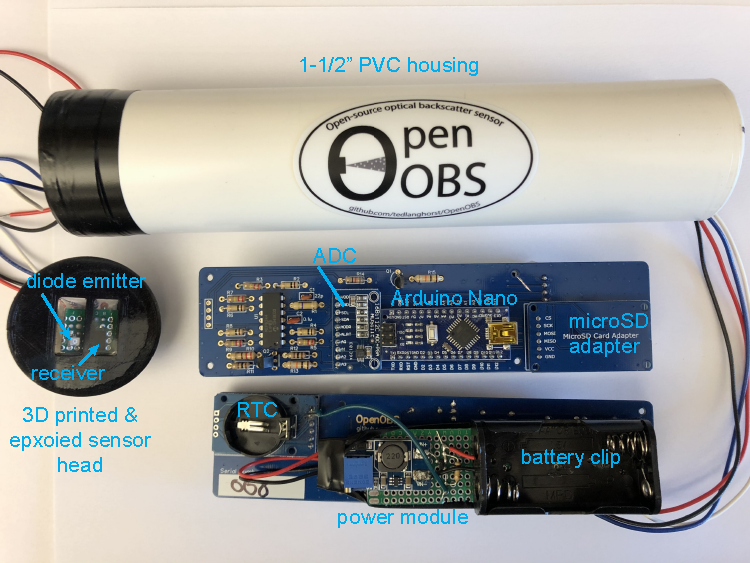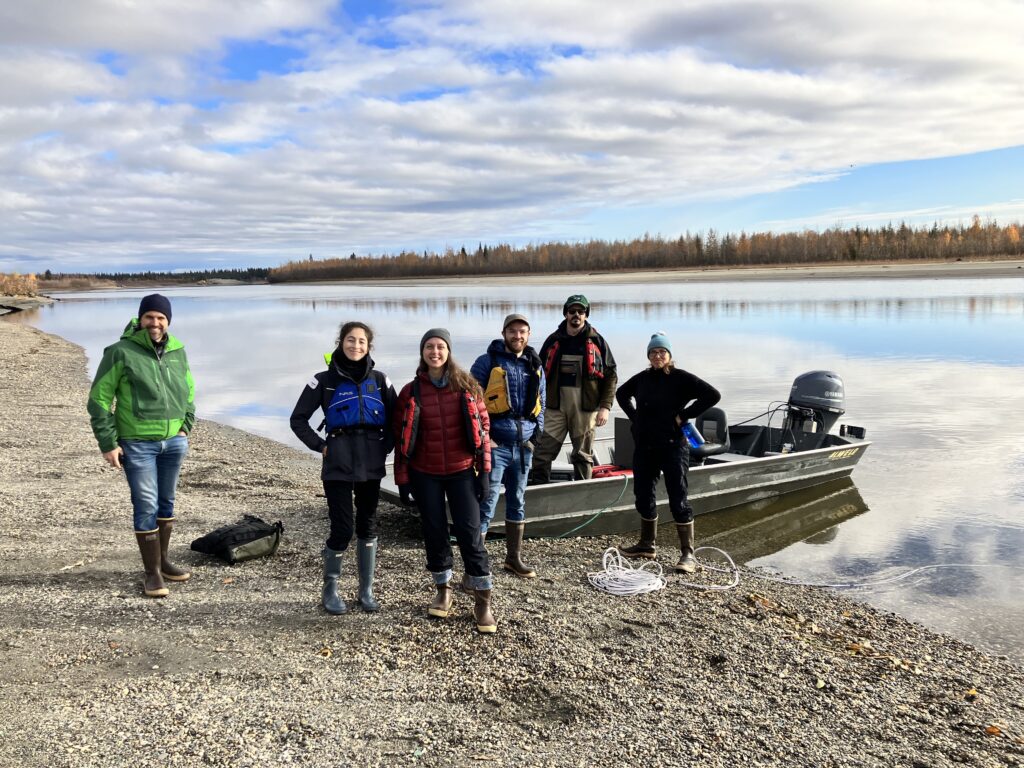Arctic rivers drain ~20% of global landscapes. Recent remote sensing work has improved our understanding of water discharge from arctic rivers, but sediment fluxes remain poorly constrained. Arctic rivers are difficult to study because seasonal ice cover limits wintertime access, and spring “breakup” brings hazardous ice conditions when the ice pack fractures and large blocks flow downstream. (Large rafts of ice blocks often form and create ice-jam floods, which present a further hazard.)

Advances in low-cost sensor technology may facilitate data collection in remote arctic rivers during all seasons. We recently developed low-cost optical backscatter sensors (OBSs) – also sometimes referred to as turbidity sensors – in a project led by Theodore Langhorst (UNC). These sensors can be constructed for ~5% the cost of commercial sensors and can be adapted for different applications, making them an attractive option for remote deployments in harsh environments where some sensors may not be recoverable.


In this project we are leveraging a new generation of OpenOBSs to measure sediment concentrations in the Tanana River between Fairbanks and Nenana, AK. This river is a tributary of the Yukon and helps transport sediment from periglacial regions of interior Alaska toward the Bering Sea. At the town of Nenana, a tripod is constructed on the river each year, and residents can bet on the date and time of ice breakup. This novel contest (Nenana Ice Classic) has provided one of the longest climate records in Alaska.

Our goal is to make measurements in summer and winter using fixed moorings connected to shore with a cabled data system, and during spring breakup using drones and drifters. Throughout this project we will be connecting with local school groups in order to engage students in instrument construction and river sampling.

Project team:
- Dr. Emily Eidam (OSU), project lead
- Theodore Langhorst (UNC), PhD candidate; instrument development and deployment
- Julianne Davis (UNC), PhD candidate; hydrologic and sediment transport modeling
- Dr. Tamlin Pavelsky (UNC), co-PI; hydrologic data collection and modeling coordination
- Sarah Clement (UAF), PhD student; education outreach and coordination with field sampling
- Dr. Katie Spellman (UAF), co-PI; education outreach and coordination with field sampling
- Dr. Chris Arp (UAF), co-PI; field deployments and outreach coordination
- Allen Bondurant (UAF), field deployments and outreach coordination

———————————
This project is funded by NSF grant ANS 2153778


